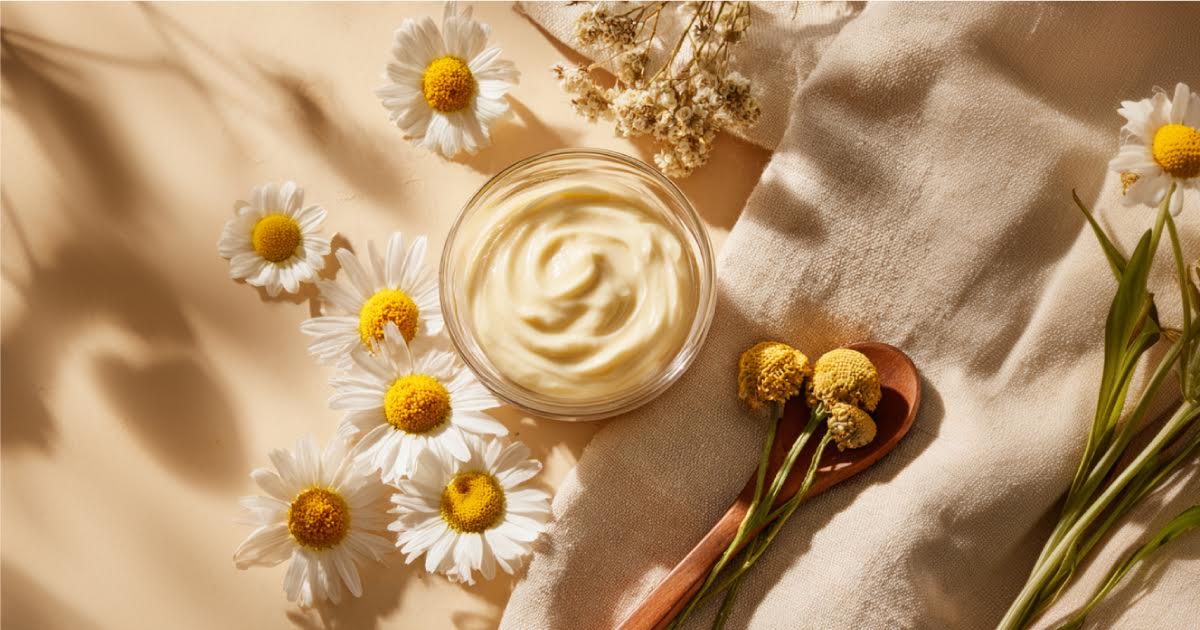Let’s be honest, sensitive skin can be a real handful. One minute everything’s fine, and the next your face is red, itchy, flaky, or randomly breaking out. Sometimes it’s a new product, sometimes it’s just the weather, and sometimes we can't really figure it out. It’s enough to make you want to give up on skincare altogether. But when your skin is acting out, the best thing you can do is keep it simple and keep it kind. And that’s exactly where chamomile steps in.
You might know chamomile as that calming bedtime tea. But here’s the thing, what it does for your stress levels, it also does for your skin. Yes, this gentle little flower is a powerhouse when it comes to calming irritation and bringing your skin back to balance. And when it’s teamed up with khus, also known as vetiver, like in N4N’s Chamomile & Khus Face Mask, it becomes a complete reset button for sensitive, overwhelmed skin.
Why Does Chamomile Feel Like a Hug for Your Skin?
Think of chamomile as your skin’s soft-spoken best friend. It’s not loud or flashy, it just quietly gets to work, helping your skin feel calm, cared for, and like itself again. Chamomile is full of naturally soothing compounds like bisabolol and flavonoids. These aren’t just fancy words, they’re the reason chamomile is so good at reducing redness, calming inflammation, and gently helping your skin heal. No drama. No stinging. Just comfort. One of chamomile’s secret strengths is that it helps strengthen your skin’s barrier, the bit that keeps moisture in and all the bad stuff out. When that barrier gets damaged, which happens easily with sensitive skin, things go haywire. Chamomile steps in to patch things up, so your skin feels stronger, more hydrated, and a whole less reactive.
So, What’s the Deal with Khus?
Now, let’s talk about khus. This earthy, grounding plant has been loved in Ayurvedic skincare for centuries, and for good reasons. If your skin ever feels hot, dry, or just plain irritated, khus is like a splash of cool water on a hot summer day, instantly refreshing. Khus is incredibly hydrating, but it's not heavy or greasy. It sinks in, locks in moisture, and helps protect your skin from the daily stressors like pollution, dust, and yes, even emotional stress too. It’s gentle, grounding, and cooling, just what sensitive skin needs. In N4N’s face mask, chamomile calms while khus hydrates and protects.
Why Does This Duo Work Wonders on Sensitive Skin?
Here’s the thing about sensitive skin, it doesn’t need to be complicated. It needs care. And that’s exactly what this Chamomile & Khus Face Mask offers. It’s made without any of the harsh stuff, no parabens, no sulphates, no synthetic fragrance. Just pure, plant-based goodness that soothes instead of stresses. Using it is simple: spread a thin layer over clean skin, let it sit while you unwind, then rinse off to reveal skin that feels soft, cool, and not at all annoyed. Even using it once or twice a week can make a visible difference.
Quick Skin Benefits of Chamomile:
-
Calms redness, itching, and irritation
-
Soothes sensitive or acne prone skin without drying it out.
-
Helps your skin repair and rebuild its own skin care barrier.
-
Feels like a warm, calming hug for your face.
Frequently Asked Question
Can chamomile reduce irritation?
Absolutely. It’s one of the most effective natural soothers out there. Whether it’s redness, reactivity, or post-breakout sensitivity, chamomile helps calm it all down.
Is chamomile safe for daily use?
Yes, it’s incredibly gentle. The N4N Chamomile & Khus Face Mask uses only natural, soothing ingredients, so it’s safe to use regularly, even on extra sensitive skin.
How does chamomile help the skin?
It calms inflammation, supports skin healing, and strengthens the skin barrier. Basically, it helps your skin chill out, heal up, and stay protected.
Final Thoughts: If your skin’s been feeling stressed lately, tight, itchy, or just out of sorts, it might be time to take a step back and simplify. Your skin doesn’t always need more. Sometimes, it just needs a little peace and quiet.
N4N’s Chamomile & Khus Face Mask is like that moment when you finally exhale after a long day. With the calming power of chamomile and the hydrating magic of khus, it gives your skin exactly what it’s been asking for: a break. So next time your face is feeling temperamental, skip the complicated chemicals and choose something that’s gentle, kind, and made by nature.



